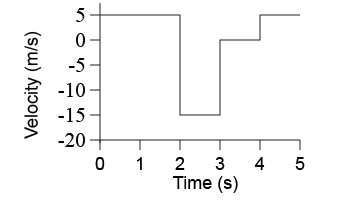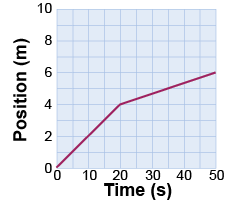- Use physics vocabulary of motion to describe the process of driving on an on-ramp onto a highway, merging with traffic, driving with the traffic, exiting at the next off-ramp, and then stopping at a traffic light.
 Two students conduct an investigation to measure the acceleration of a ball rolling down a 1 m ramp inclined at 45°. One student releases the ball at the same time the second student starts the stopwatch. The students then exchange the (still running) stopwatch and the first student stops the clock when the ball reaches the bottom of the ramp. Evaluate and critique the design of this experiment. Two students conduct an investigation to measure the acceleration of a ball rolling down a 1 m ramp inclined at 45°. One student releases the ball at the same time the second student starts the stopwatch. The students then exchange the (still running) stopwatch and the first student stops the clock when the ball reaches the bottom of the ramp. Evaluate and critique the design of this experiment.

 Draw the distance versus time graph that corresponds to the velocity versus time graph illustrated above. (Be sure to look at the scale of the y-axis.) Draw the distance versus time graph that corresponds to the velocity versus time graph illustrated above. (Be sure to look at the scale of the y-axis.)
 Two students conduct an investigation with a motion-sensing lab cart. Fai starts data collection then Moseph pushes the cart across the floor at roughly constant velocity. Data collection begins when the cart is still at rest and ends while the cart is still moving with constant speed. The graph shows zero acceleration, then positive acceleration, then zero acceleration again. Explain how the data correspond to the motion. Two students conduct an investigation with a motion-sensing lab cart. Fai starts data collection then Moseph pushes the cart across the floor at roughly constant velocity. Data collection begins when the cart is still at rest and ends while the cart is still moving with constant speed. The graph shows zero acceleration, then positive acceleration, then zero acceleration again. Explain how the data correspond to the motion.
 A physics problem has three unknown variables, v, v0, and x. Both equations of accelerated motion apply. Is it possible to find a unique solution that assigns a value to each of the three unknown variables? Why or why not? A physics problem has three unknown variables, v, v0, and x. Both equations of accelerated motion apply. Is it possible to find a unique solution that assigns a value to each of the three unknown variables? Why or why not?
 Assume that an object has negative acceleration. Assume that an object has negative acceleration.
- Is it possible that its speed can be increasing? How?
- What must the signs of velocity and acceleration be to ensure that speed is increasing?
- Ask two friends to answer the following question: “Can there be acceleration but zero velocity?
Give an example.” Write down their answers. How do their answers compare with your own answer to the same question?
| | - Two balls are dropped from rest and allowed to fall. If one ball is allowed to fall for 1 s and the other for 3 s, compare the distances they have fallen.
 Say you drop two cannonballs out of a high window. The first cannonball is twice as heavy as the second. Which will hit the ground first if there is no air resistance? Say you drop two cannonballs out of a high window. The first cannonball is twice as heavy as the second. Which will hit the ground first if there is no air resistance?
 Two balls are thrown at the same time with the same speed. One is thrown directly downward while the other is thrown straight up. Compare their speeds when they hit the ground. Two balls are thrown at the same time with the same speed. One is thrown directly downward while the other is thrown straight up. Compare their speeds when they hit the ground.
 Consider how far a falling object moves in each second during its fall. Assume the object is initially at rest. During the first second the object falls a certain distance. Between 1 and 2 s it falls a greater distance since its speed has increased even though the time interval is the same. How much farther does the object fall between 1 and 2 s compared to the distance it falls between 0 and 1 s? Consider how far a falling object moves in each second during its fall. Assume the object is initially at rest. During the first second the object falls a certain distance. Between 1 and 2 s it falls a greater distance since its speed has increased even though the time interval is the same. How much farther does the object fall between 1 and 2 s compared to the distance it falls between 0 and 1 s?
- A car is traveling at 15 m/s. It goes down a hill where it accelerates at 3 m/s2 for 4 s. How fast is it going at the bottom of the hill?
- Silvia is driving at the speed limit of 25 m/s when she sees an ambulance approaching in her rear-view mirror. To move out of its way, she accelerates to 32 m/s in 3 s. What was her acceleration during those 3 s?

- Answer the following questions based on the position versus time graph above.
- What is the average velocity over the whole 50 s interval shown?
- What is the maximum speed shown on the graph?
- What is the total distance traveled between t = 0 and t = 50 s?
- What is the final position at t = 50 s?
- How does the acceleration at t = 10 s compare with the acceleration at t = 30 s?
|

